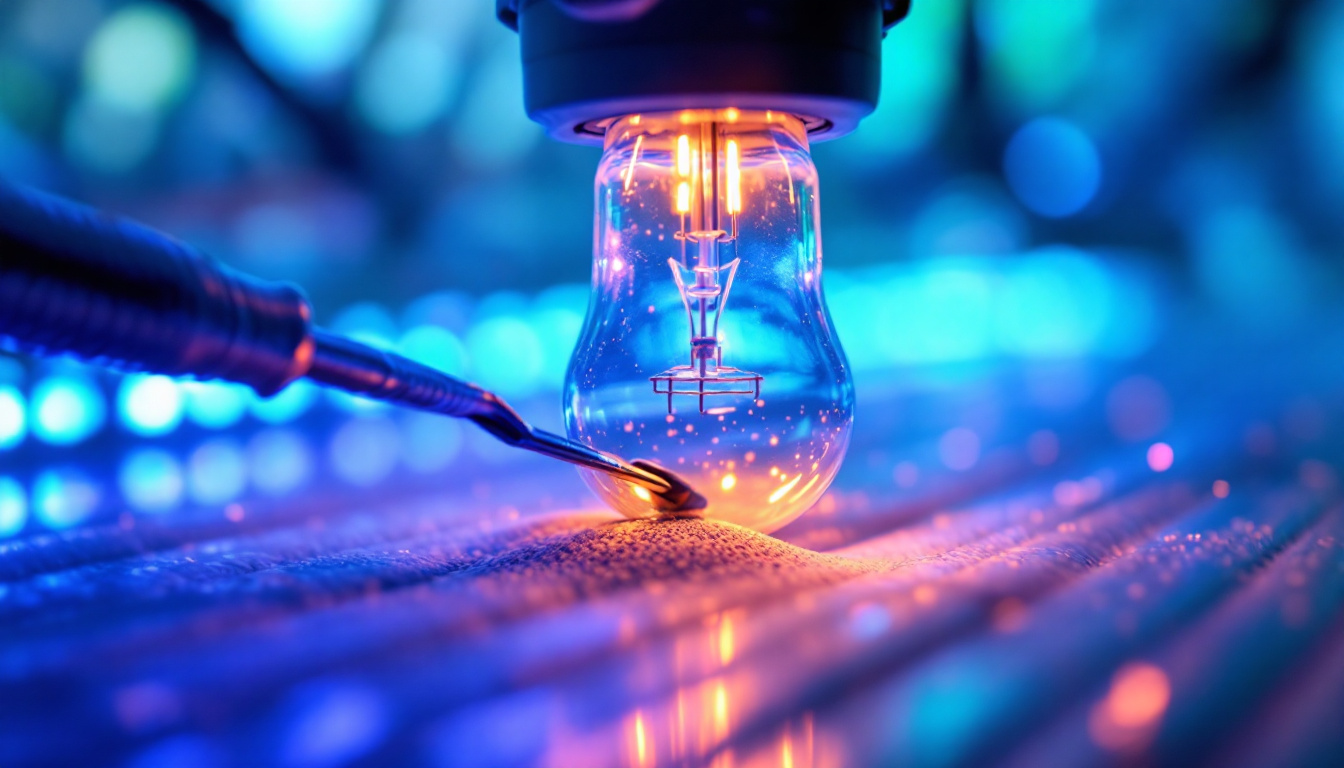
In the world of lighting, the ballast is an essential component that often goes unnoticed until it fails. For lighting contractors, understanding the intricacies of replacement ballasts is crucial for ensuring efficient and effective lighting solutions. This article delves into the key facts about replacement ballasts, including types, installation, troubleshooting, and best practices to enhance service quality.
Ballasts are devices that regulate the current to lamps and provide the necessary voltage to start the lamp. They play a critical role in the performance and longevity of lighting systems, particularly in fluorescent and HID (High-Intensity Discharge) fixtures. A well-functioning ballast not only ensures optimal light output but also contributes to energy efficiency. The importance of ballasts extends beyond mere functionality; they also play a vital role in enhancing the overall safety of lighting systems by preventing overcurrent situations that could lead to lamp failure or even electrical fires.
There are primarily two types of ballasts: magnetic and electronic. Each type has its own set of characteristics, advantages, and applications. Magnetic ballasts are the traditional type and are usually heavier and bulkier. They work by using electromagnetic coils to regulate the current. While they are generally more durable, they are less energy-efficient compared to their electronic counterparts. On the other hand, electronic ballasts are lightweight and compact, offering better energy efficiency and improved performance. They provide a more stable light output and can operate at higher frequencies, which can lead to flicker-free lighting. Additionally, electronic ballasts often include features like soft-start technology, which gradually increases the voltage to the lamp, extending its lifespan and reducing initial power surges.
When selecting a replacement ballast, several factors must be considered. First, it is essential to match the ballast to the type of lamp being used. For instance, fluorescent lamps require specific ballasts designed for their wattage and type, whether they are T8, T12, or compact fluorescent lamps. The choice of ballast can also affect the color temperature and overall quality of the light produced, influencing the ambiance of a space.
Additionally, understanding the wattage and voltage requirements is crucial. Using the wrong ballast can lead to poor performance, reduced lifespan of the lamp, and increased energy consumption. It is also advisable to consider the compatibility of the ballast with existing fixtures and any specific features that may be required, such as dimming capabilities or emergency backup. For instance, in commercial settings where lighting needs may vary throughout the day, selecting a ballast that supports dimming can enhance both energy savings and user comfort. Furthermore, consulting with a lighting professional can provide insights into the latest advancements in ballast technology, ensuring the best choice for specific applications.
Energy efficiency is a significant concern in the lighting industry, and regulations often dictate the types of ballasts that can be used. Many regions have adopted energy codes that require the use of high-efficiency electronic ballasts. These regulations are designed to reduce energy consumption and lower greenhouse gas emissions. Compliance with these standards not only helps in promoting sustainability but can also enhance the reputation of businesses that prioritize eco-friendly practices.
Contractors must stay informed about local regulations to ensure compliance and to provide clients with the most efficient lighting solutions. Utilizing energy-efficient ballasts not only benefits the environment but can also lead to cost savings for clients through reduced energy bills. Moreover, many utility companies offer rebates or incentives for businesses that upgrade to energy-efficient lighting systems, making the initial investment more attractive. As technology continues to evolve, the integration of smart lighting systems that utilize advanced ballasts is becoming increasingly popular, allowing for greater control over lighting environments and further enhancing energy savings.
Proper installation of replacement ballasts is critical to ensure optimal performance and longevity. Following best practices can help prevent future issues and enhance the reliability of the lighting system. A well-installed ballast not only improves energy efficiency but also contributes to the overall safety and functionality of the lighting setup, making it essential for both residential and commercial applications.
Before beginning any installation, safety should be the top priority. Always ensure that the power supply is turned off and that the circuit is properly locked out to prevent accidental energization. Wearing appropriate personal protective equipment (PPE) is also essential to safeguard against potential hazards. This includes gloves to protect your hands from sharp edges and electrical shocks, safety goggles to shield your eyes from debris, and hard hats if working in areas where overhead hazards are present. It’s also wise to have a first aid kit readily available in case of any minor injuries.
The installation process for a replacement ballast generally involves several key steps:
Even experienced contractors can make mistakes during installation. Some common errors include:
By being aware of these potential pitfalls, contractors can take proactive measures to avoid them and ensure a successful installation. Additionally, maintaining a clean and organized workspace can significantly reduce the likelihood of mistakes, as it allows for better focus and minimizes distractions during the installation process. Taking the time to prepare and plan thoroughly can make all the difference in achieving a seamless installation.
Even with proper installation, issues can arise with ballasts over time. Understanding how to troubleshoot these problems is essential for contractors to provide timely and effective service.
Several signs may indicate a failing ballast. These include:
To diagnose ballast issues, follow these steps:
If troubleshooting indicates a failure, replacing the ballast is often the best course of action. Additionally, if the ballast is older and energy efficiency is a concern, upgrading to a more efficient model can provide long-term benefits.
Contractors should also educate clients on the signs of ballast failure and the importance of timely replacement to avoid more extensive issues down the line.
Preventive maintenance can significantly extend the life of ballasts and improve overall lighting performance. Implementing a regular maintenance schedule can help identify potential issues before they lead to failure.
Conducting regular inspections of lighting systems can help catch early signs of ballast issues. This includes checking for flickering lights, unusual sounds, and visual signs of wear or damage. Keeping a maintenance log can assist in tracking the performance of ballasts over time.
Dust and debris can accumulate in fixtures and around ballasts, leading to overheating and reduced efficiency. Regular cleaning can help maintain optimal performance. Ensure that fixtures are turned off and cooled down before performing any cleaning tasks.
As technology advances, newer ballast options become available that offer enhanced features and efficiency. Encouraging clients to consider upgrades can lead to better lighting quality and energy savings. Modern electronic ballasts, for example, can provide superior performance and compatibility with advanced lighting controls.
Understanding replacement ballasts is essential for lighting contractors aiming to provide high-quality service and solutions. From selecting the right type of ballast to ensuring proper installation and maintenance, knowledge of these components can significantly impact the performance and longevity of lighting systems.
By staying informed about the latest advancements and best practices in ballast technology, contractors can enhance their service offerings and ensure customer satisfaction. Ultimately, a well-functioning ballast contributes not only to effective lighting but also to energy efficiency and sustainability in the industry.
Ready to elevate your lighting projects with the best in ballast technology? Look no further than LumenWholesale, where we specialize in providing contractors with superior, spec-grade lighting products at unbeatable wholesale prices. Our selection of ballasts meets the highest industry standards, ensuring you deliver reliable and high-performance lighting solutions to your clients. Take advantage of our hassle-free bulk buying options with free shipping, and secure premium lighting components at the best value — without any hidden fees. Don’t compromise on quality or cost; choose LumenWholesale for the perfect blend of affordability and convenience. Wholesale Lighting at the Best Value is just a click away.

Discover how High Bay LED Lights 200W can transform your lighting projects and maximize profits.

Discover the essential guide to suntan bed bulbs tailored for lighting contractors.

Discover how outdoor home security lights can boost your profits with expert tips for lighting contractors.

Discover the insider tips and expert techniques lighting contractors use to transform outdoor spaces with stunning house lights.